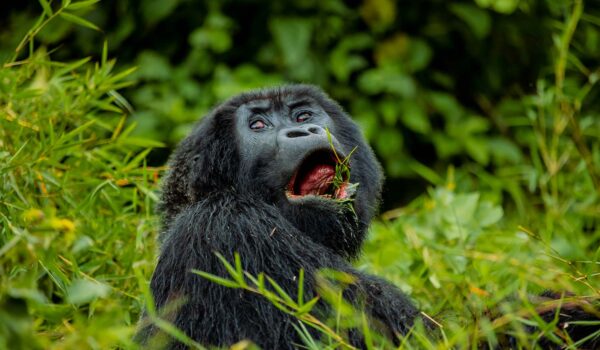Birds in Congo
Largely protected inside its vast national parks, the Democratic Republic of the Congo (DRC) is renowned for its exceptional biodiversity. These parks are important habitats for both terrestrial and avian species, and they are a home to a wide variety of animals. Virunga, Garamba, and Salonga are just a few of the DRC’s national parks that are essential to the preservation of some of Africa’s most recognizable animals. The DRC is a popular destination for ornithologists and bird watchers because of these parks, which not only preserve land-based wildlife but also serve as vital habitats for a variety of bird species.
Virunga National Park
The DRC’s eastern border is home to Africa’s oldest national park, Virunga National Park. Renowned for its breathtaking scenery and mountain gorillas, it is a UNESCO World Heritage site. However, because of its diverse habitats, which include savannas, woodlands, and volcanic regions, the Virunga is also home to an astounding diversity of bird species. The park is home to more than 700 different kinds of birds, making it a refuge for both migratory and resident birds. Among the notable species that bird watchers often pursue are the Grauer’s broadbill, the blue-headed sunbird, and the Ruwenzori turaco.
Garamba National Park
Garamba National Park, located in the northeastern Democratic Republic of the Congo, has vast savanna landscapes that are brimming with life. Despite difficulties brought on by poaching and fighting, the park continues to be a bastion for a number of rare and endangered species. Garamba is a significant location for bird species, especially those that flourish in savanna and wetland environments, and is also home to elephants, giraffes, and hippos. Approximately 340 bird species may be seen in the park, such as the African fish eagle, which is often spotted soaring over rivers and lakes in pursuit of prey, and the shoebill stork, which has a prehistoric look.
Salonga National Park
In the center of the Congo Basin, Salonga National Park is Africa’s biggest tropical rainforest reserve and an unspoiled wilderness. Many forest-dwelling animals, including forest elephants and bonobos, find sanctuary in this area. Additionally, it offers vital habitat to a variety of bird species that have evolved to live in thick tropical rainforests. The Congo peafowl, the DRC’s national bird, and the African grey parrot, renowned for its intelligence and mimicking skills, are among the bird species found in Salonga. Because it is unique to the DRC, the endemic Congo peafowl is a particularly good example of the country’s biodiversity.
The Variety of Birds in Congo’s National Parks
Together, the DRC’s national parks safeguard an astounding variety of bird species—an estimated 1,100 in all. These include tiny birds like the African green broadbill and raptors like the African crowned eagle. For migratory animals that traverse between Africa and other continents, these national parks provide essential resting places. These parks, for instance, provide as resting places for migrating species like the European bee-eater and barn swallow on their lengthy flights.
The variety of bird species found in Congo’s national parks contribute significantly to local tourism in addition to their ecological significance. By drawing tourists to the DRC, birdwatching may help local populations make money and cultivate an appreciation for conservation efforts. The preservation of these parks’ terrestrial and avian biodiversity has been the main focus of conservation efforts in recent years. The objective is to preserve these places as pristine sanctuaries for the many bird species that are essential to the ecology as well as the iconic animals.
The Democratic Republic of the Congo’s national parks are among the world’s most ecologically rich places, with a wide variety of habitats that are home to many bird species. Each park provides distinct ecosystems that serve various avian groups, ranging from the volcanic vistas of Virunga to the lush rainforests of Salonga. The preservation of these regions is essential to the survival of Congo’s amazing birdlife and general biodiversity, despite obstacles like poaching and political unrest. These parks serve as a reminder of the Congo Basin’s natural wealth and stress how crucial it is to protect it for future generations.

